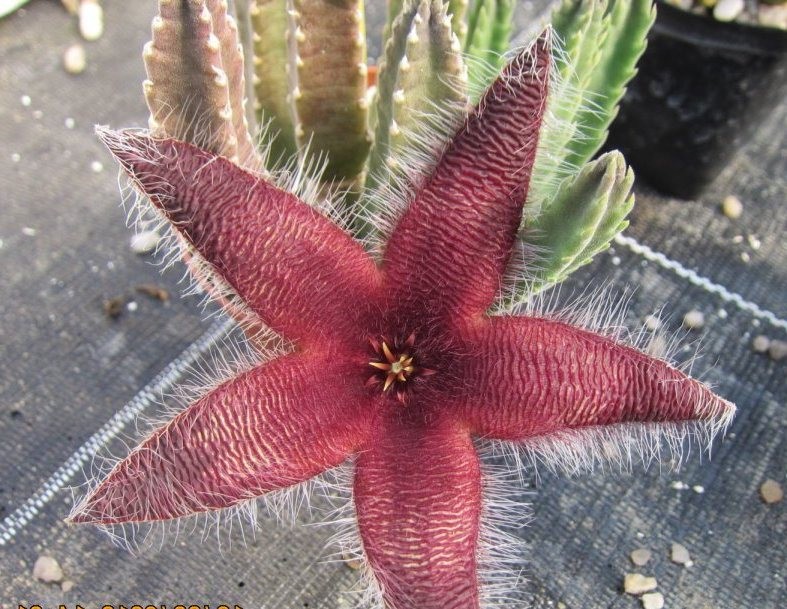Starfish flower
(Ceropegia pulvinata)

Description
Stapelia hirsuta, common name starfish flower or carrion plant, is a species of flowering plant belonging to the family Apocynaceae. Stapelia hirsuta stems are subquadrangular in cross-section, about 20 centimetres (7.9 in) high, and 1 centimetre (0.39 in) to 2 centimetres (0.79 in) thick. Concave groves run vertically along the stems, between their four angles. This feature can sometimes help to distinguish S. hirsuta from many other Stapelia species with which it naturally co-occurs (e.g. Stapelia rufa, Stapelia engleriana) that typically have stems which are also subquadrangular, but which are more rounded in cross-section. The surface of S.hirsuta stems are also usually shortly pubescent. Leaf rudiments are 1-2mm long. Populations growing on sandstones can be glabrous stemmed, stemmed with purple mottling. This species is endemic to South Africa and southern Namibia. Its wide distribution extends along the southern edge of the arid Karoo region, throughout the "Little Karoo" in the southern Cape, as far west as the Robertson Karoo and the Swartland just outside Cape Town. It can be found in the mainly winter rainfall areas, in the far west of South Africa, northwards through the Namaqualand region, as far north as southern Namibia. It is absent from the interior of South Africa. The genus epithet "Stapelia" was named in honour of Johannes van Stapel, who described the first plant discovered, while the Latin species name “hirsuta” means "hairy”. The flowers are flat, very hairy, dark-red and resemble rotting meat. Corolla can reach a width of about 5–15 centimetres (2.0–5.9 in). The carrion smell serve to attract various pollinators, especially flies. The flowering period extends from late summer through late autumn. Stapelia is a genus of low-growing, spineless, stem succulent plants, predominantly from South Africa with a few from other parts of Africa. Several Asian and Latin American species were formerly included but they have all now been transferred to other genera. The flowers of certain species, most notably Stapelia gigantea, can reach 41 cm (16 inches) in diameter when fully open. Most Stapelia flowers are visibly hairy and generate the odor of rotten flesh when they bloom.
Taxonomic tree:







